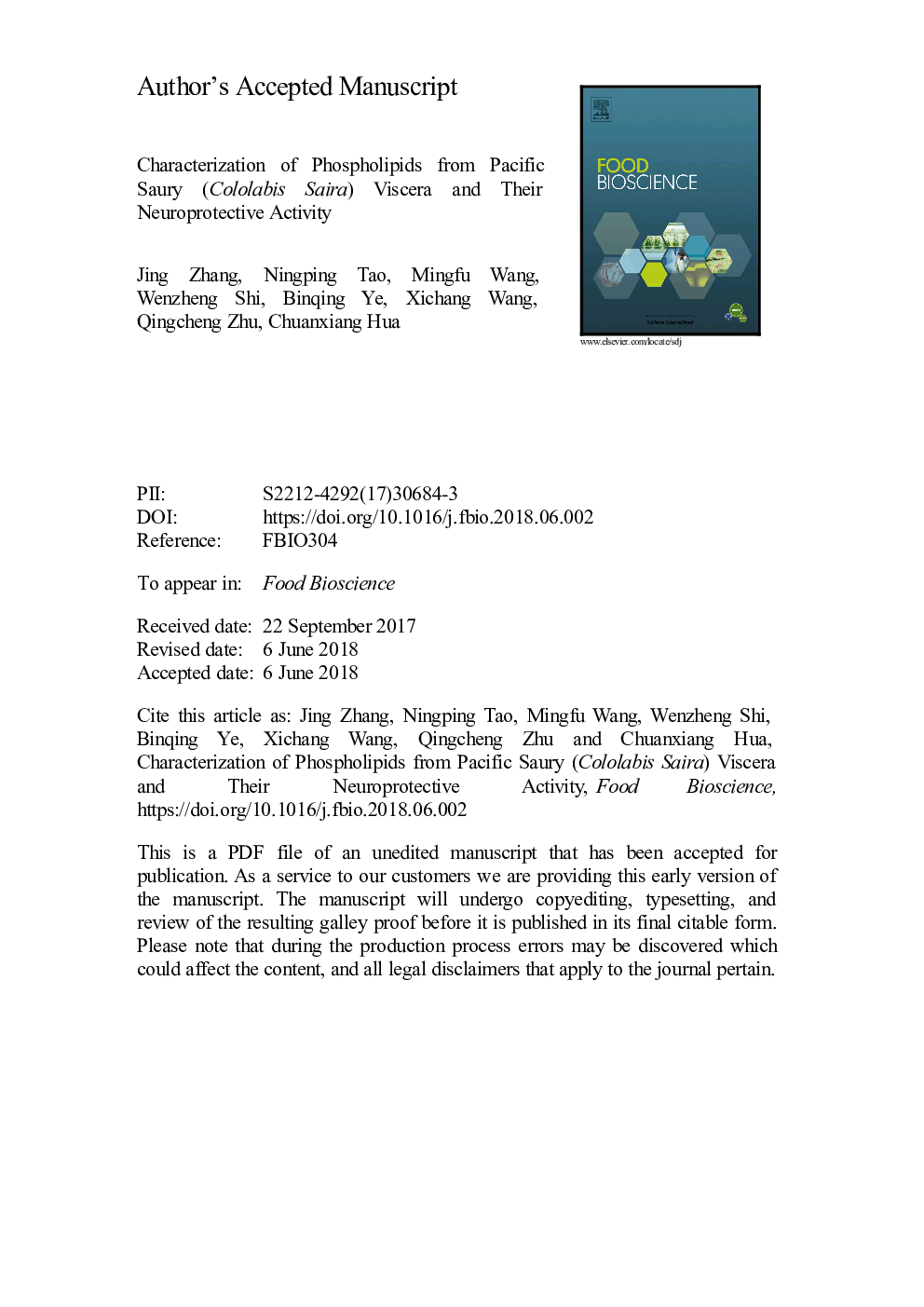| Article ID | Journal | Published Year | Pages | File Type |
|---|---|---|---|---|
| 6488792 | Food Bioscience | 2018 | 24 Pages |
Abstract
Pacific saury (Cololabis saira) is an important marine commercial fish in the world. The crude Pacific saury viscera (PSV) phospholipids were extracted with supercritical carbon dioxide and organic solvent method using ethanol, yielding 24/100â¯g phospholipids and 21/100â¯g (dry weight), respectively. Their fatty acid profiles were obtained using gas chromatography. Docosahexaenoic acid (DHA) and palmitic acid were the major fatty acids. High-performance liquid chromatography equipped with an evaporation scattered light detector was used to quantitatively analyse the major component of the phospholipid extract. Phosphatidylcholine (89â¯mg/g), phosphatidylinositol (53â¯mg/g) and phosphatidylethanolamine (40â¯mg/g) were the main phospholipids, while phosphatidylserine, lysophosphatidylcholine and lysophosphatidylcholine were the minor phospholipids at 5, 15 and 19â¯mg/g, respectively. The inhibitory effects of PSV phospholipids and the PC fraction, obtained using silica gel column chromatography, on the secretion of amyloid beta (Aβ)1-42 in the supernatant of Chinese hamster ovary cells stably transfected with amyloid precursor protein and presenilin 1 were studied, with soybean phospholipids as the positive control. The results showed that, compared with the model control group, the Aβ1-42 was decreased 69% with PSV phospholipid, 62% with PC fraction and 36% with soybean phospholipids. Taken together, PSV phospholipids were rich in n-3 fatty acids, especially DHA, and may have potential for the treatment of neurodegenerative diseases such as Alzheimer disease.
Related Topics
Physical Sciences and Engineering
Chemical Engineering
Bioengineering
Authors
Jing Zhang, Ningping Tao, Mingfu Wang, Wenzheng Shi, Binqing Ye, Xichang Wang, Qingcheng Zhu, Chuanxiang Hua,
